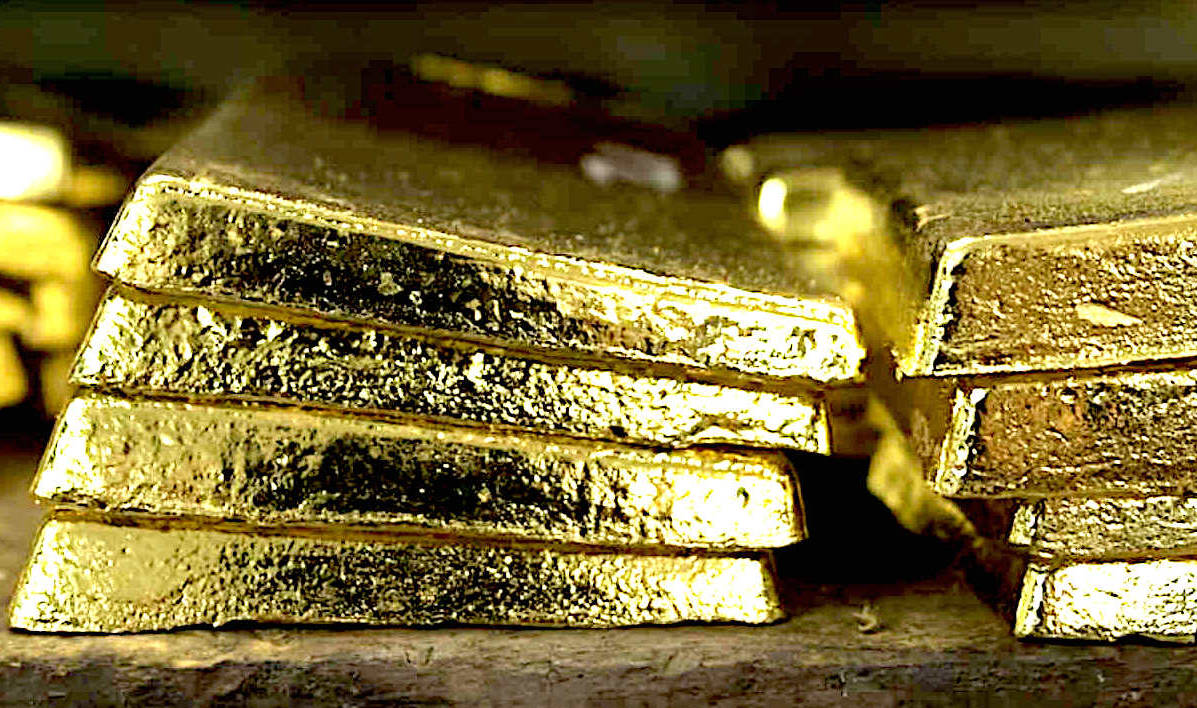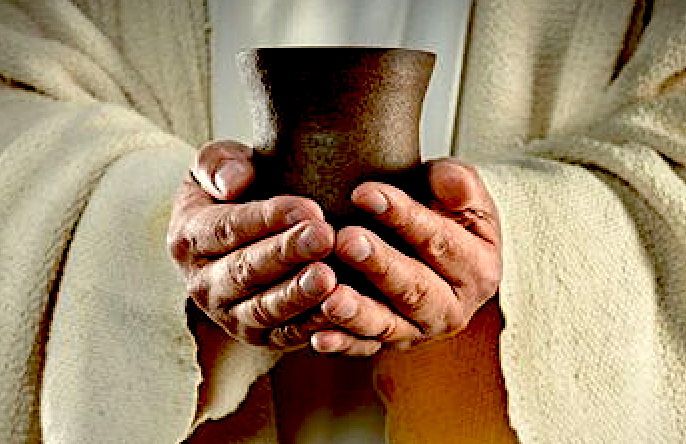|

When
food shortages and the energy crisis really begin to bite, only gold,
silver and gemstones might be trusted apart from barter. In a secure future,
banks who trade in real coin of the realm, are the only ones who will be
trusted. For this reason precious metal coins make a comeback. John Storm is
in favor of a more stable form of international currency, over paper promissory
notes. He has suggested that gold is index linked to energy, food, timber and
other essential commodities.
The
gold reserves held by the International Monetary Fund (IMF) is around 90.5 million ounces (or 2,814.1 metric tons)
at designated depositories.
Until the early 1970s, the IMF acquired its gold holdings through four main channels:
1. At the IMF’s founding in 1944, member countries paid 25 percent of their initial quotas in gold. They did the same with quota increases over the next three decades. These payments represent the largest source of the IMF's gold.
2. Members normally paid all interest owed on IMF credit in gold.
3. Members also could use gold to repay credit extended by the IMF.
4. Members seeking to acquire another member’s currency could do so by selling gold to the
IMF, as South Africa did in 1970–71.
Based on historical cost, the IMF’s gold holdings are valued at SDR 3.2 billion
about $4.1 billion using end-August 2022 exchange rates
At market prices their value is SDR 119 billion
about $155.2 billion, using end-August 2022 exchange rates
Hence, gold is the medium to invest in, as a hedge against inflation. If all citizens banked using gold, inflation using
promissory notes could never have taken place. The voters would control the politicians and banks. As it is, the banks and politicians control the voters.
The IMF may sell gold outright according to prevailing market prices and may accept gold from member countries repaying loans, using an agreed price based on current market prices. Such transactions require IMF Executive Board approval by an 85% majority of the total voting power.
THE
GOOD GOLD DAYS
In
days gone by they traded in real money based on solid gold and
silver minted
coins. Today, paper currency is based on worthless promises, made by governments
that are typically corrupt is some measure; political pirates, racking up
staggering national debts, based on flawed policies, free of accountability
or transparency. There are though some
countries who are building up real wealth. Gold reserves as ingots and bars,
that will be worth something when the digital/paper system collapses. Paper
and digital currency is no better than Crypto
currencies. Here today, gone
tomorrow.
So
it is that when John
Storm discovers a long lost hoard of treasure, a number of nations were keen to get their grubby mitts
on it. To add to their
dwindling stockpiles. These are estimates as at 2023.
HOW
DOES THE IMF USE THE GOLD IT HAS?
At times, the IMF has returned gold to member countries or sold some of its holdings. The reasons for this have varied:
Between 1957–71, the IMF sold gold on several occasions to replenish its holdings of currencies. During 1956‒60, some IMF gold was sold to the United States and invested in US Government securities to offset operational deficits.
In 1999, the IMF Executive Board authorized off-market gold sales to help finance the IMF’s participation in the Heavily Indebted Poor Countries
(HIPC) Initiative. Ultimately, the IMF sold 12.94 million ounces of
gold in transactions with Brazil and Mexico.
In 2009, the IMF Executive Board approved the sale of 12.97 million ounces of gold
- one-eighth of the IMF’s total holdings of gold at that time. The sale was part of a new income model to put the IMF’s finances on a secure long-term footing and increase low- or no-interest lending to low-income countries through the Poverty Reduction and Growth Trust
(PRGT).
The sale began in October 2009 with off-market transactions with central banks and other official holders at market prices. In February 2010, the IMF announced it would conduct market sales over several months to avoid market disruptions. The IMF concluded its sales in December 2010.
The IMF’s profits over the book value of the gold amounted to SDR 6.85 billion, more than it had projected when it endorsed the sales. With these windfall profits, the IMF Executive Board approved in February 2012 a first distribution of SDR 700 million to members, which became effective in October 2012.
DISTRIBUTION TO THE POVERTY REDUCTION & GROWTH TRUST
The distribution was subject to assurances that at least 90 percent of the amount would flow to the
PRGT. As of end-August 2022, nearly 90 percent of the distribution had been transferred to the
PRGT.
The Executive Board approved in September 2012 the second distribution of SDR 1,750 million of reserves from windfall
gold sales profits, which became effective in October 2013. As of mid-August 2022, 90 percent of the amounts distributed had been provided to the
PRGT. The distributions of gold windfall profits were a key factor in increasing loans to the poorest countries through the
PRGT.
IMF ON CLIMATE CHANGE
1. Mitigation: including advice on measures to contain and reduce emissions through
policies - such as increasing carbon taxes, reducing fuel subsidies and improving
regulation - and providing tools to help countries achieve their Nationally Determined Contributions.
2. Adaptation: including guidance on building financial and institutional resilience to natural disasters and extreme weather events, and infrastructure investments to cope with rising sea levels and other warming-related phenomena.
3. Transition to a low-carbon economy: including updates to financial sector regulation to cover climate risks and exposure to “brown” assets, as well as measures to help countries diversify economies away from carbon intensive industries while mitigating the social impact on affected communities.
John
Storm endorsed these policies, hoping to influence the transition to
zero carbon shipping, using the Elizabeth
Swann. Being solar and hydrogen
powered, the
world's fastest zero carbon vessel, was a technological showpiece.
Provided, that fleet operators noted what is possible, and port authorities
laid on suitable bunkering facilities.
TOP
TEN
1.
The United States of America, with 8,133.5 tons of gold
2. Germany, with 3,362.4 tons of gold
3. Italy, with 2,451.8 tons of gold
4. France, with 2,436.2 tons of gold
5. Russia, with 2,298.5 tons of gold
6. China, with 1,958.3 tons of gold
7. Switzerland, with 1,040 tons of gold
8. Japan, with 765.2 tons of gold
9. India, with 686.8 tons of
gold.
10. The Netherlands, with 612.4 tons of gold
HOW
DOES HAVING GOLD RESERVES IMPACT A COUNTRY?
Any country that exports gold or has a huge gold reserve will inevitably experience a rise in its currency as the price of gold
increases. This price rise of gold increases the trade or helps balance the trade deficit. It also leads to an increase in the country’s
exports.
On the other side, if any country lacks gold in its reserves and is a massive importer of it, they have a weaker economy whenever the gold
price increases.
In 2020, the top 10 countries traded more than one metric ton of gold, emphasizing just how important this metal is in the world economy.
According to the WGC (World Gold
Council) data from April 2021, central banks bought about 273 tons of gold in 2020.
The
International
Monetary Fund is not a country; thus, it is not included in the list. However, if it were, it would be in the third position with 2,814 tons
of gold in its safe.
The
best known golden treasures are Doubloons, Guineas and
Sovereigns. Other
forms of transportable money are diamonds, rubies and
emeralds. It's difficult to trade with old bars or ingots. Not so
difficult to trade half sovereigns or silver pieces of eight.

The
Cup of Christ is the Holy Grail, that has never been found, in all
searches through the ages.
|

